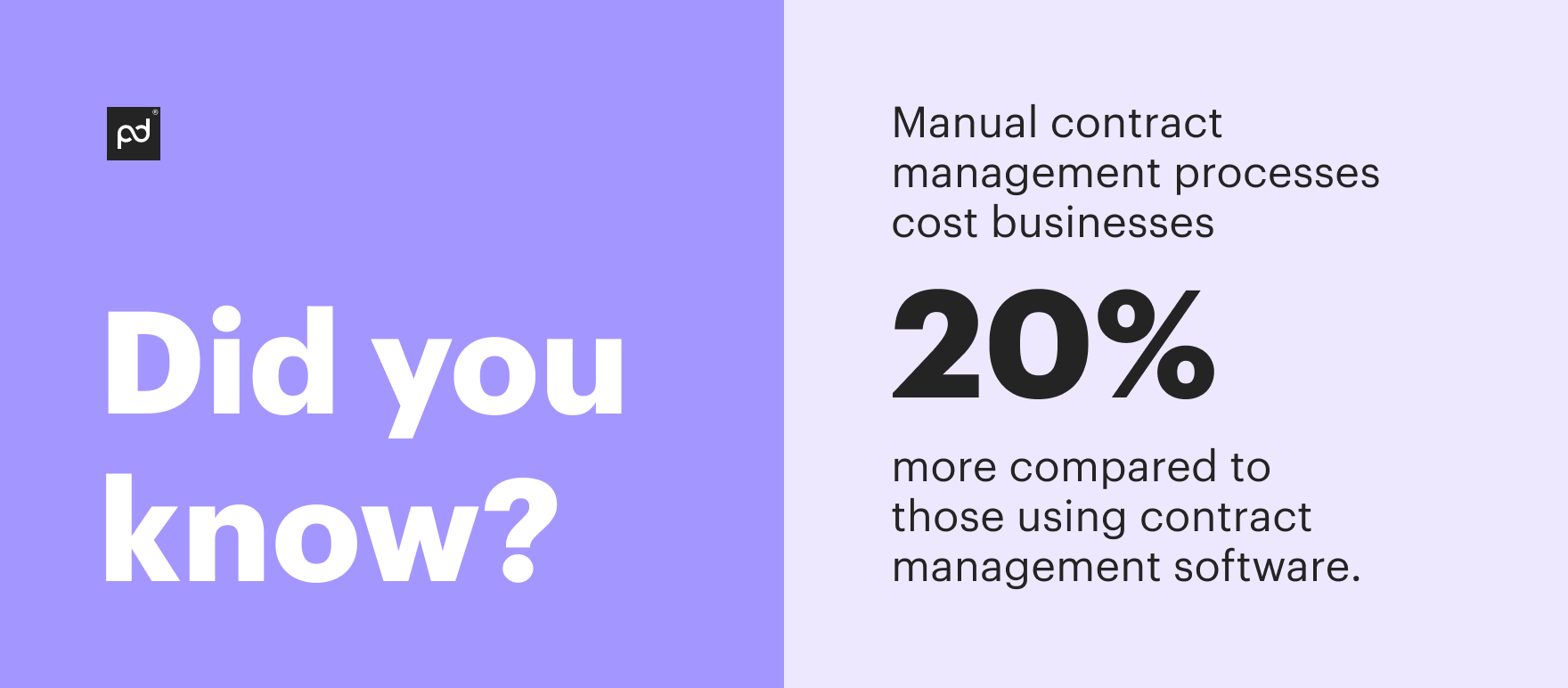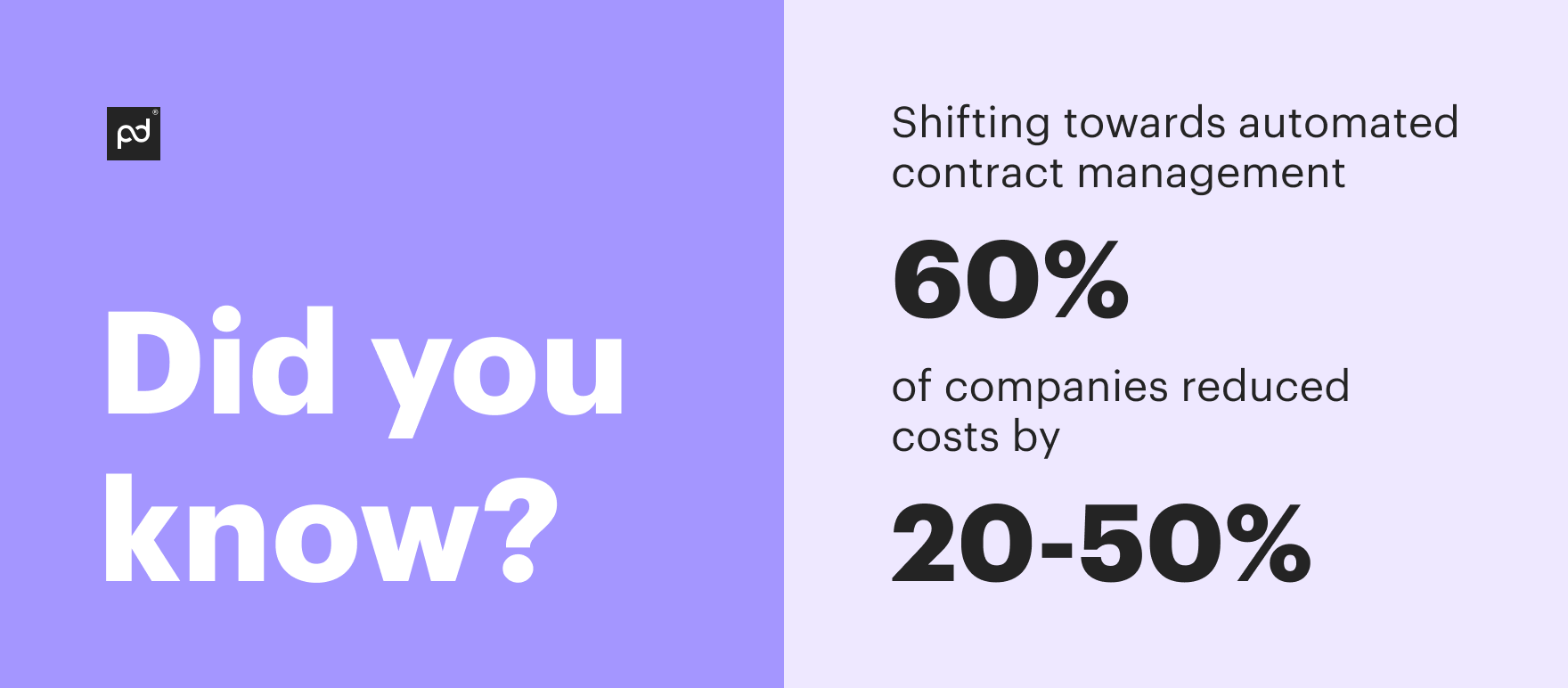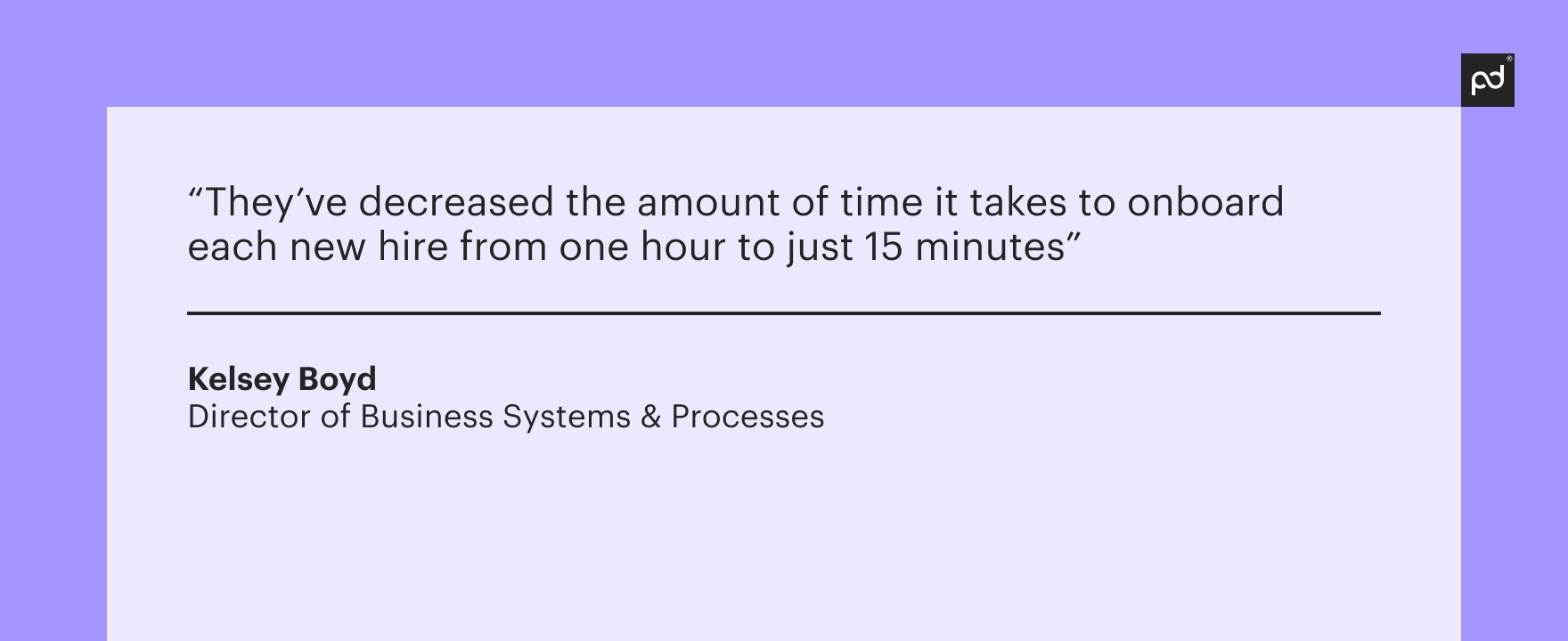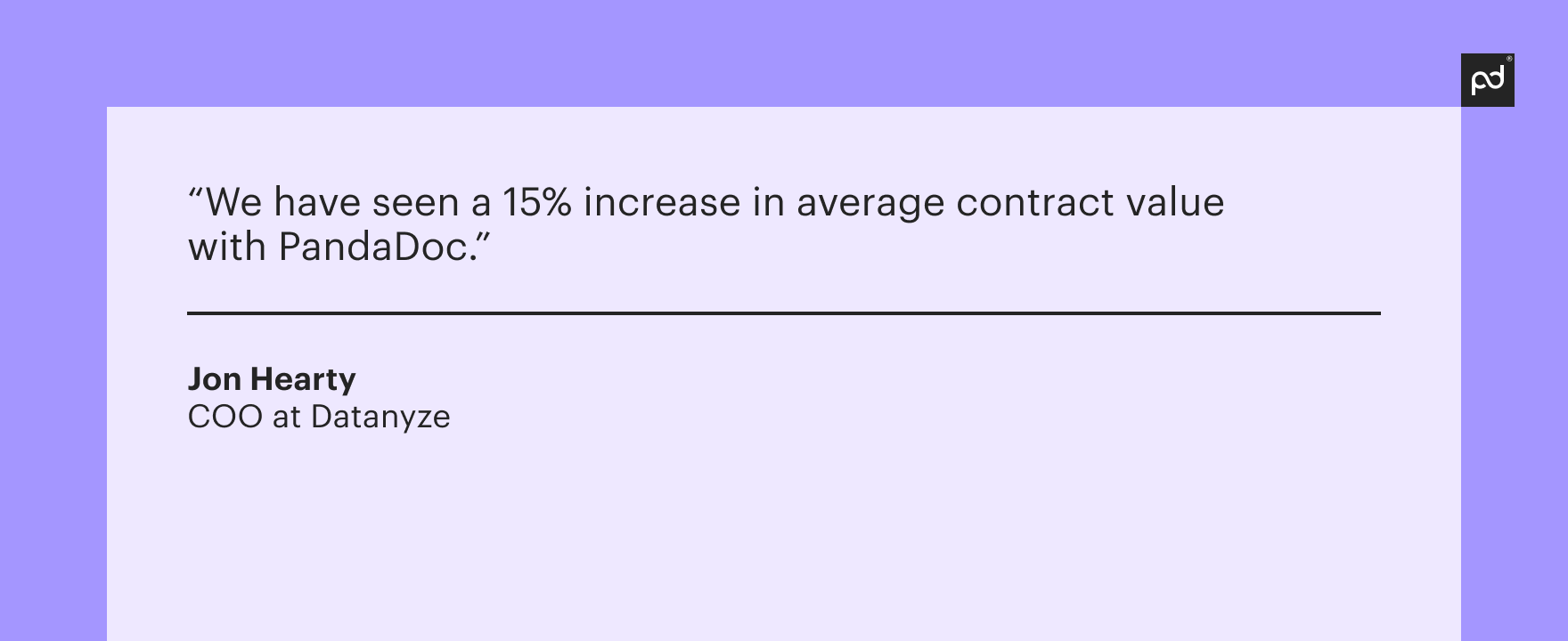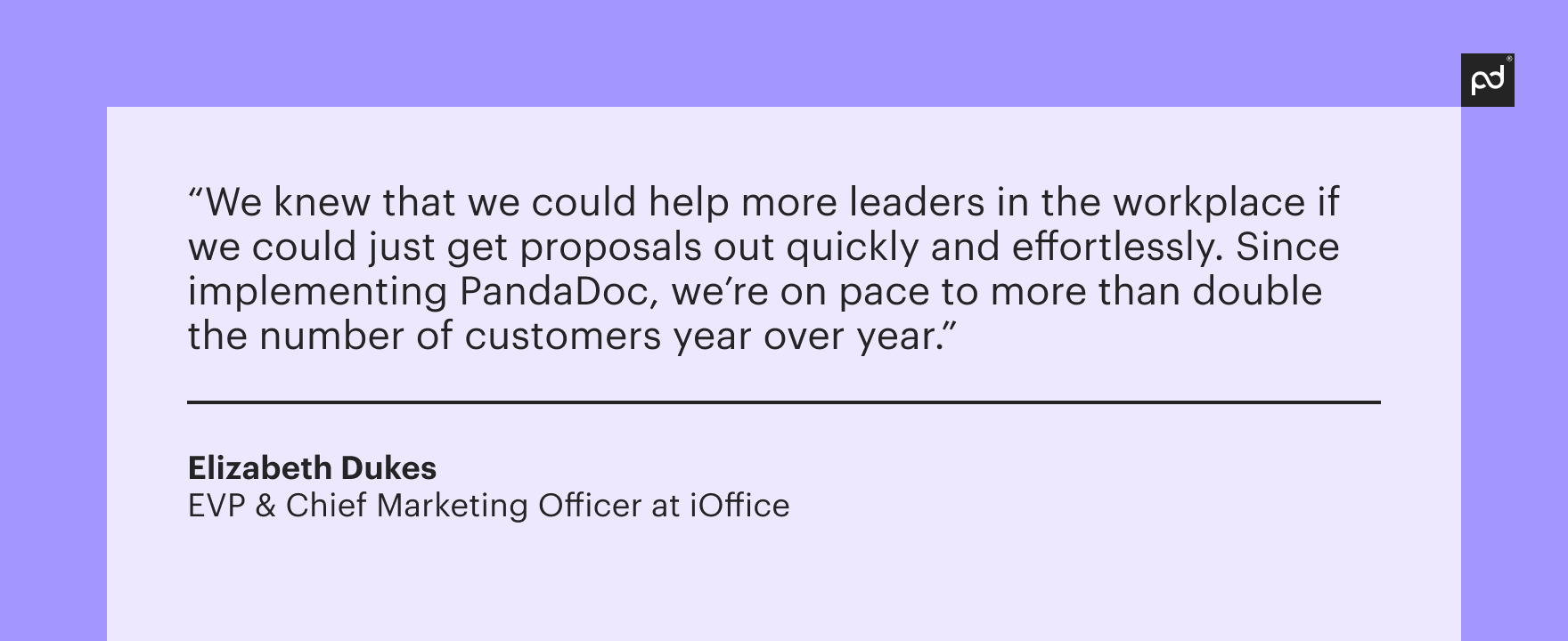Curious about contract management and how it’s shaking up the way companies and individuals do business?
You’re not alone. In a world where efficiency is key, contract management is becoming a hot topic.
But what exactly is it, and why are more and more people turning to it to automate processes, streamline templates, and handle renewals?
In this article, we’ll unpack the ins and outs of contract management, exploring why it’s the go-to solution to optimize operations and stay ahead in today’s fast-paced digital environment.
Let’s get started!
What is contract management?
Chances are, you’ve signed a contract. Maybe it was for a job, house, or service.
Maybe you signed with pen and paper.
Perhaps you dropped off the contract at Fedex or UPS, sealed an envelope, and used a tracking number to ensure the documents arrived safely and on time.
However, like most things in business, companies are finding smarter, more efficient ways to streamline your contract repository – from beginning to end.
With the widespread adoption of cloud-based contract management software, you now have the ability to create and modify templates, simplifying every aspect of your contract repository.
Contract management is defined as the overall process of effectively planning, administering and managing commercial contracts with various entities such as vendors, partners, customers, and employees at all stages of their engagement with a business.
Contract management solutions leverage integrations with various tools like Zapier and other plugins, eliminating the hassle of manual tasks and providing real-time insights into document statuses.
This not only makes it easier to send, sign, and process payments online but also enhances workflow efficiency by providing visibility into which stakeholders have viewed or signed a document.
Who benefits from automating contract management?
The short answer: everyone involved.
From small startups to multinational corporations, the benefits of automating contract management extend across various industries and roles.
In fact, the projected growth of the global contract lifecycle management software market indicates that it is anticipated to achieve a value of USD 2.4 billion by the year 2026, with a compounded annual growth rate (CAGR) of 14.5%.
From startups to multinational corporations, there are numerous, powerful benefits to automating this part of the contract lifecycle.
Did you know?
In the past year, we’ve been able to 10x our document management efficiency because of our partnership with PandaDoc.
Read about how Carr Workplaces achieved significant cost savings by consolidating their software stack and automating their document generation process.
With PandaDoc and HubSpot, Carr Workplaces achieved a 15% reduction in time to close deals and saves over $100,000 annually on software.
Small business owners
As a small business owner, you wear many hats, and managing contracts can be a daunting task.
However, with a cloud-based contract management software, even businesses with minimal resources can streamline their contracting processes.
Whether you’re getting an idea off the ground and creating an MVP, or sending contracts to clients, vendors, or partners, having an efficient system in place ensures accuracy, compliance, and timely execution without the need for a dedicated contract manager.
Large enterprises
Even large businesses with dedicated contracting specialists can reap significant benefits from contract management software.
These tools offer advanced features to optimize complex workflows, automate routine tasks, and centralize contract data for better visibility and control.
By leveraging contract management software, large enterprises can enhance efficiency, mitigate risks, and accelerate contract lifecycles, thereby maximizing ROI and maintaining a competitive edge in the market.
Legal departments and compliance officers
Contract management software isn’t just for contract managers— it’s a game-changer for legal departments and compliance officers.
These tools offer robust features for tracking key contract metrics, monitoring deadlines, and enforcing compliance with regulatory standards and internal policies.
By providing real-time insights and analytics, contract management software empowers legal teams to proactively identify risks, mitigate liabilities, and optimize contract performance, thereby bolstering organizational resilience and governance.
Sales and procurement teams
Contract management software isn’t limited to legal departments; it also extends its benefits to sales and procurement teams.
With integrated contract management solutions, sales professionals can streamline the quoting and proposal process, accelerate deal closure, and ensure alignment with contractual terms and pricing.
Similarly, procurement teams can enhance vendor management, negotiate favorable terms, and minimize contract bottlenecks, driving cost savings and operational efficiency across the supply chain.
Finance departments
Automating contract management can have significant benefits for finance departments.
By centralizing contract data and automating invoicing and payment processes, finance teams can improve cash flow management, reduce billing errors, and minimize revenue leakage.
Additionally, automated contract tracking and reporting enable finance professionals to gain insights into contract performance and forecast future revenue more accurately.
Operations teams
Operations teams are responsible for ensuring that contracts are executed smoothly and efficiently.
Automating contract management helps operations teams streamline workflows, track contract milestones and deadlines, and manage contract-related documents and communications more effectively.
This improves operational efficiency, reduces administrative overhead, and enhances collaboration across departments.
Executive leadership
From CEOs to CFOs, executive leadership benefits from the insights and visibility provided by automated contract management systems.
By having real-time access to contract data, key performance metrics, and compliance status, executives can make informed decisions, mitigate risks, and drive business growth more effectively.
Four signs of successful contract management
How do you know if your contract management implementation and utilization is a success?
Here are some key indicators to help you measure effectiveness:
1. The process is streamlined
Successful contract management results in streamlined processes – from creation to renewal.
This includes efficient drafting, negotiation, approval, execution, and management of contracts.
When you’re successfully implementing contract management, you’ll experience a decrease in unnecessary delays and bottlenecks, and you’ll notice that contracts move swiftly through each stage of the lifecycle.
2. Improved compliance
Compliance with regulatory requirements and internal policies is a critical aspect of successful contract management.
Organizations with successful practices have robust systems in place to ensure that contracts adhere to legal standards, industry regulations, and company policies.
Organizations with successful contract management practices have mechanisms in place to identify, assess, and mitigate risks throughout the contract lifecycle.
This includes risk analysis during contract negotiation, proactive monitoring of contractual obligations, and strategies to address potential risks before they escalate.
3. Enhanced visibility and control
Successful contract management provides stakeholders with enhanced visibility and control over the entire contract lifecycle.
This includes real-time access to contract data, status updates, key milestones, and performance metrics.
With improved visibility, stakeholders can track contract progress, identify potential issues, and make informed decisions to optimize contract outcomes.
4. Faster payments
Successful contract management reduces the time between service delivery and payment.
This allows organizations to streamline their payment processes, improve cash flow management, and enhance overall financial performance.
Businesses that exhibit these signs demonstrate effective implementation and utilization of contract management practices, leading to better contract outcomes and overall business success.
How to successfully use contract management in your industry
Not all contract management solutions are created equally.
It’s important that before you invest resources into one, you ensure that it’s robust enough to handle your workflows.
Not only does a winning contract management solution alleviate logistical problems, lower costs, and optimize contract creation times, it should also be user-friendly and provide you with the flexibility you need to succeed.
For example, the ability to modify pre-built templates for your specific use case can significantly cut down on time spent creating a document from scratch.
Plus, when you find a solution that offers embedded integrations with critical tools you already use like HubSpot, Salesforce and Pipedrive, you can automatically import accurate customer data into your docs with ease and simplify your document workflow.
Let’s cover how contract management software can address your specific pain points based on your industry.
Software & Technology
For IT organizations, contract renewal isn’t just a routine task; it’s critical to boost customer satisfaction and enhance your operational efficiency.
However, the complexity can sometimes demand a lot of manual work.
Here’s how the right contract management system can streamline workflows:
- Centralized tracking
- Automated notifications
- Compliance management
- Revision management
- Customer communication
HR Departments
HR departments are tasked with overseeing a variety of contracts, ranging from employment agreements and non-disclosure agreements to contracts around employee benefits.
However, managing this number of contracts can be especially tedious for HR teams.
Here’s how legal contract management software can enhance efficiency and streamline workflows within HR departments:
- Centralized contract repository
- Approval workflows
- Version control
- Compliance management
Retail or Wholesale Business
When you have a retail or wholesale business, you have a lot of moving parts to oversee.
From juggling numerous suppliers to sending out invoices or pricing agreements, there is complexity involved.
Here’s how implementing a contract management solution can streamline operations and alleviate these challenges for retail or wholesale businesses:
- Supplier contract management
- Warranty tracking
- Document organization and security
What steps are involved in contract management?
Stage 1. Request
The request for a new contract usually arrives from the sales team, a hiring manager, or a project stakeholder who is close to reaching a tentative agreement with a client, vendor, or potential hire.
When the request is received by the contract manager or designated contracting authority within the organization, this individual notifies all relevant parties — including the legal department and financial team — and oversees the contract throughout its lifecycle.
Your contract manager may also provide a checklist to project stakeholders or request additional documentation in order to proceed with the procurement or expenditure.
Stage 2. Creation and review
During this stage, the contract agreement is written and reviewed internally by your project stakeholders, legal experts, and the financial team.
For complex contracts with specific requests that go beyond a standard boilerplate, this process can take several rounds of negotiation before all teams sign off or approve the document.
At this stage of the process, a contract manager will liaise with each department and work to resolve outstanding issues that stop the contract from moving forward.
Stage 3. Pre-approval
When sign-offs from all major departments are complete, the contract is ready to be sent from your company to the vendor, client, or employee.
At this stage, the contracting manager sends the contract on behalf of the organization.
This is a minor but critical step in contract management because it introduces external partners to the contracting process and positions the contract manager as the primary point of contact to an outside source.
Stage 4. Negotiation and redlining
During this phase of the contract lifecycle, the business and the customer negotiate the terms of the agreement and finalize the details of the contract.
During this process, a contract manager may act as a primary point of contact for each side of the negotiation, ensuring that both sides have the documentation that they need to finalize the deal.
And that’s a good thing because contracts are likely to change hands multiple times.
In PandaDoc, you can actually handle your business negotiations without ever leaving the editor.
Our in-app commenting and redlining features make collaboration fast and easy by keeping everything online and in one place.
You can even set approvals to put guardrails on rep/client negotiations to ensure that your team is operating within acceptable guidelines.
No more downloading and re-uploading documents. No more back and forth in long email threads and lengthy offsite messaging.
Stage 5. Signing and capture
This stage of contract management signals that all involved parties are satisfied with the original contract and any negotiated changes.
All parties sign the contract — either physically or via electronic signature — and copies of the contract are captured by all parties.
The signing process can be challenging, especially if one side becomes unresponsive during the negotiation process or if new customer stakeholders get involved before the signing process is complete.
Based on our internal data, four out of five changes to a contract are related to the signing process.
Your contract managers and project stakeholders can try to jumpstart negotiations and get their contracts signed more quickly by staying on top of this process and setting firm deadlines.
Stage 6. Execution, management and maintenance
When all sign-offs are completed, the contract is then implemented.
External suppliers follow the letter of the contract to deliver goods and services to the organization, and the organization works to satisfy and maintain that vendor relationship.
During this stage, contract managers may act as the primary point of contact for any contracting-related issues that need clarification.
They may also issue approvals for invoices or milestone payments and ensure that the contract is maintained by both parties.
Stage 7. Storage, compliance and retention
All of your business contracts should be stored and maintained in accordance with company policy and government regulations.
During this stage of contract management, the original contract (along with any addenda or modifications) must be stored or retained based on government compliance and industry guidelines.
A contract manager may be responsible for organizing and maintaining all contract data in a searchable format so that all contracts are accessible in the event of an audit, renegotiation, or vendor conflict.
In PandaDoc, you could do that by sorting all relevant documents into folders and subfolders and by keeping a close eye on the status of all documents in the pipeline.
Our filtering tools make it easy to store content and keep an eye on documents in the months or years after they’ve been signed.
Stage 8. Performance and renegotiation
As contracts age, they may need to be renegotiated based on expected performance or upcoming expiry.
This requires pulling contracts out of storage or connecting with internal and external partners in order to maintain existing terms or set up a new agreement.
If either company has experienced a change in leadership, direction, or personnel, this process may spark the creation of an entirely new contract or result in the discontinuation of goods or services from the external party.
Stage 9. Analysis and optimization
The final step in contract lifecycle management is the most important process for ensuring organizational streamlining.
When your company amasses a sizable number of similar contracts, those contracts should be analyzed and optimized based on their goals, similarities, and performance.
Multiple vendor agreements may be consolidated into a single company boilerplate that requires minimal modification.
Analysis tools can be extremely useful during this phase of CLM.
For example, PandaDoc provides content reporting that you can use to figure out which documents performed best and determine which documents reps use most often, you could use those insights to create even better sales docs.
From there, you can rebuild the most-used documents, optimize them to improve their success rate, and get everyone in your sales team on the same page regarding which documents to send during each phase of the sales process.
This is also an opportunity to manage risk and ensure that contracts contain all necessary clauses to protect the organization, a process that is often overlooked.
One McKinsey study found that eight out of ten contracts failed to contain a benchmarking clause to mandate a period review of pricing against industry standards.
It’s equally important for contracts to be analyzed and compared for better opportunities around performance and negotiation.
By creating the right templates and workflows, it’s possible to make contracts easier to maintain across the entire CLM process.
Better contract management with PandaDoc
From streamlined contract creation and negotiation to automated approval workflows and electronic signatures, PandaDoc offers everything you need to create faster, more secure workflows.
By centralizing contract management in PandaDoc’s intuitive platform, you can reduce administrative overhead, ensure compliance with contractual obligations, and gain better insights into contract performance.
If you’re ready to take your contract management to the next level and unlock the full potential of your contracts, consider leveraging PandaDoc for your organization.
With us, you can streamline your contract processes, improve collaboration, and drive better business outcomes.
Sign up for a 14-day trial to see how the platform, templates, and resources can help you take your contracts to the next level.
Disclaimer
PandaDoc is not a law firm, or a substitute for an attorney or law firm. This page is not intended to and does not provide legal advice. Should you have legal questions on the validity of e-signatures or digital signatures and the enforceability thereof, please consult with an attorney or law firm. Use of PandaDocs services are governed by our Terms of Use and Privacy Policy.
Originally published December 2, 2021, updated May 29, 2024
